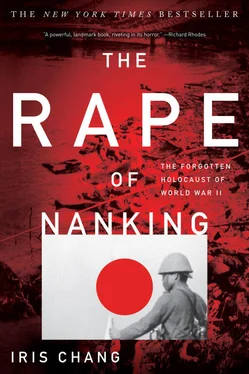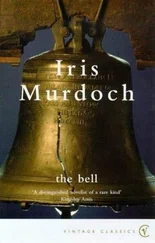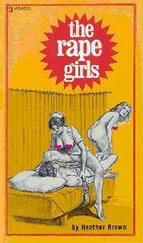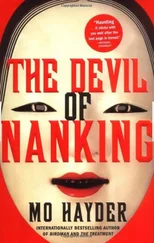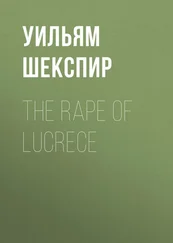The other soldiers ran in, no doubt incredulous at what they saw. They lunged toward her with their bayonets but failed to stab her effectively because their comrade was in the way. Because her opponent was so short and small, Li was able to jerk him completely off his feet and use him like a shield to parry their thrusts. But then the soldiers aimed their bayonets at her head, slashing her face with their blades and knocking out her teeth. Her mouth filled with blood, which she spit into their eyes. “Blood was on the walls, on the bed, on the floor, everywhere,” Li remembered. “I had no fear in my mind. I was furious. My only thought was to fight and kill them.” Finally a soldier plunged his bayonet into her belly and everything went black for her.
The soldiers left her for dead. When Li’s body was brought before her father, he could not sense any breath coming from her and assumed the worst. He asked someone to carry her behind the school and to dig a pit for her grave. Fortunately, someone noticed before the burial that Li was still breathing and that bubbles of blood foamed from her mouth. Friends immediately rushed Li to Nanking University Hospital, where doctors stitched up her thirty-seven bayonet wounds. While unconscious, she miscarried that evening.
Word of Li’s fight somehow reached her husband, who immediately asked the military for three months’ leave and borrowed money to get back to Nanking. In August 1938, he returned and found his wife with her face swollen and crosshatched with scars and her newly shorn hair growing from her head like bristles.
Li would suffer both pain and embarrassment from her wounds for the rest of her life. Mucus leaked from a gaping hole on the side of her nose, and tears ran down her eyes during bad weather or bouts of illness. (Miraculously, although the Japanese had stabbed the whites of her eyes with their bayonets, Li did not go blind). Every time she looked in a mirror, she saw the scars that reminded her of that terrible day, December 19, 1938. “Now, after fifty-eight years, the wrinkles have covered the scars,” she told me during my visit to her apartment in Nanking. “But when I was young, the scars on my face were obvious and terrible.”
Li believes it was the combination of her personality and unique family background that gave her the will to fight back. Unlike other Chinese women, typically taught at an early age to be submissive, she came from a family completely devoid of feminine influence. Her mother died when she was only thirteen, forcing Li to grow up among men in a tough military family. Her father, brother, and uncles were either soldiers or policemen, and under their influence she became a tomboy. As a young girl, she also possessed a temper so short that her father dared not teach her kung fu, no doubt out of fear that she would terrorize the other kids on the block. Almost sixty years later, surrounded by her numerous children and grandchildren, Li had retained her health and passion for life—even her reputation for being ill-tempered. Her one regret, she said, was not learning kung fu from her father; otherwise, she might have enjoyed the pleasure of killing all three of the Japanese soldiers that day.
How many people died during the Rape of Nanking? When Miner Searle Bates, a history professor at Nanking University, was asked during the International Military Tribunal of the Far East (IMTFE) to give an estimate of the deaths, he answered: “The question is so big, I don’t know where to begin…. The total spread of this killing was so extensive that no one can give a complete picture of it.”
The Chinese military specialist Liu Fang-chu proposed the figure of 430,000. Officials at the Memorial Hall of the Victims of the Nanking Massacre by Japanese Invaders and the procurator of the District Court of Nanking in 1946 claimed at least 300,000 were killed. The IMTFE judges concluded that more than 260,000 people were killed in Nanking. Fujiwara Akira, a Japanese historian, gives the figure of approximately 200,000. John Rabe, who never conducted a systematic count and left Nanking in February, before the slaughter ended, estimated that only 50,000–60,000 were killed. The Japanese author Hata Ikuhiko claims that the number was between 38,000 and 42,000. Still others in Japan place the number as low as 3,000. In 1994 archival evidence emerged from a former Japanese-owned railway company in Manchuria to reveal that one burial squad alone disposed of more than 30,000 bodies in Nanking between January and March 1938.
Perhaps no one has made a more thorough study of the statistics than Sun Zhaiwei, a historian at the Jiangsu Academy of Social Sciences. In a 1990 scholarly paper entitled “The Nanking Massacre and the Nanking Population,” he reports that, according to census reports, the population in Nanking in 1937 exceeded 1 million before hostilities broke out between Japan and China. Using Chinese archival material, memoirs from Chinese military officials, and reports of the Nanking branch of the Red Cross, Sun determined that at the time of Japanese occupation there were at least half a million long-term residents in the city (the rest had already left the city), plus 90,000 Chinese soldiers and tens of thousands of migrants—a total of approximately 600,000 people in Nanking, perhaps even 700,000.
Sun gives his estimate in a second paper. The Nanking city archives and the No. 2 National Archives of China contained burial records submitted by private families, local charitable organizations, and the Nanjing zizhi weiyuanhui —the Chinese puppet government under the Japanese. After carefully examining these records, Sun found that charitable organizations in Nanking buried at least 185,000 bodies, private individuals at least 35,000, and the Japanese-controlled local government more than 7,400. (Some of the burial records are so detailed they include categories for even the sex of the victims and the location of the disposal.) Using Chinese burial records alone, Sun calculated that the number of dead from the Rape of Nanking exceeded the figure of 227,400.
However, this statistic balloons still larger if one factors in a stunning confession made by a Japanese prisoner almost four decades before Sun’s paper was written. In 1954, while awaiting trial at the Fuxuan war criminal camp in the northeastern province of Liaoning, Ohta Hisao, a Japanese imperial army major, submitted a forty-four-page report in which he confessed that the Japanese army burned, dumped, or buried bodies in a massive disposal effort. Most of the bodies came from Hsiakwan, the area near the river northwest of Nanking. On the waterfront the Japanese piled fifty bodies onto each waiting boat, then took them to the middle of the river to dump overboard. Trucks carried bodies to other areas where they were burned and buried to eliminate evidence of the massacre. For three days starting on December 15, 1937, Ohta’s army unit dumped 19,000 bodies of Chinese victims into the Nanking River, while a neighboring unit disposed of 81,000 bodies and other units got rid of 50,000—a total of some 150,000 bodies. By adding Ohta’s figure to his tally of Chinese burial record statistics, Sun concluded that the total number of corpses amounted to a staggering 377,400—a figure that surpasses the death toll for the atomic blasts at Hiroshima and Nagasaki combined.
Even if skeptics dismiss Ohta’s confession as a lie, one should keep in mind that even without his testimony the burial records at Nanking offer convincing evidence that the death toll of the massacre was, at the very least, in the 200,000 range. Sun’s research is corroborated by court exhibits that I unearthed from IMTFE records (see table on page 102). By adding together the burial estimates of charitable organizations (later mentioned in Sun’s paper) and the body counts made by other individuals (not mentioned in Sun’s paper), the tribunal concluded that approximately 260,000 people were killed during the Nanking massacre. It is important to remember that the IMTFE number does not include Japanese burial statistics of the Chinese dead, which could push the figure into the 300,000 or even 400,000 range.
Читать дальше
